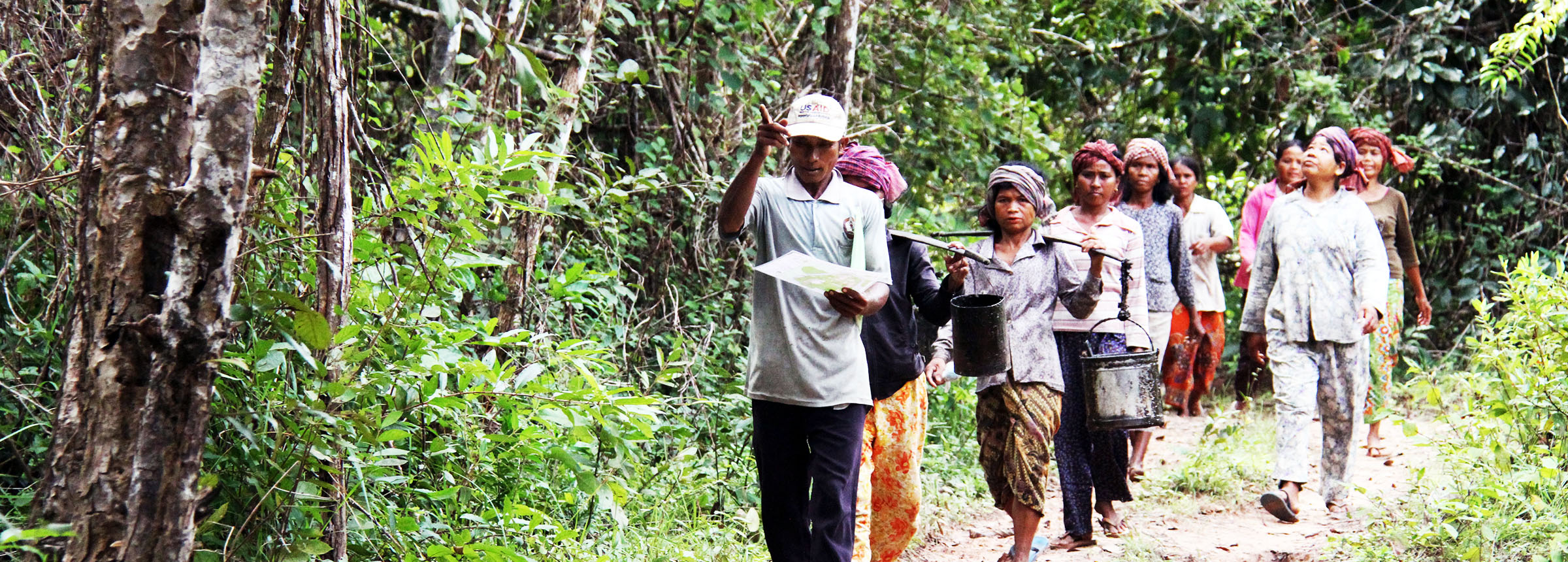
Community-based Tree Seed Production with Desmodium rensonii and Flemingia macrophylla
Agroforestry for the Pacific Technologies
A publication of the Agroforestry Information Service
September 1995, Number 13
Community-based forestry and agroforestry programs around the world reforest denuded lands, protect valuable watersheds and produce indispensable tree products for local needs. These programs begin planting operations with a commodity of small size but great importance – seed! Adequate supplies of high-quality tree seed are necessary to grow high quality seedlings. Unfortunately, shortages of seeds are common and limit the success of many community-based tree planting programs.
Many of these community-based programs are operated by non-profit organizations or farmer groups on shoestring budgets. They are not able to purchase premium priced seed from regional or international producers – where prices are as high as
US $ 100/kg.
Even if funds for seed purchase are available, other problems arise. Shipment through international and local mail may be time consuming and irregular. Seed viability often suffers and sometimes shipments never arrive. Information on the provenance (geographic origin) may be lacking, incomplete or inaccurate. When received, seed may be of inferior quality or inappropriate for local environmental conditions.
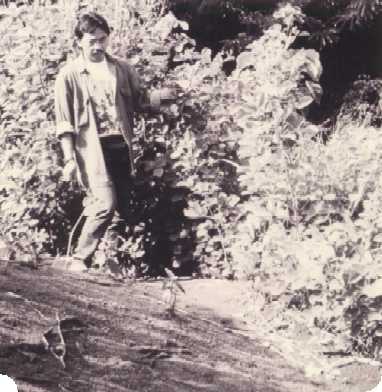
control erosion on steep agricultural
lands. (Photo: J.M. Roshetko).
Organizations and individual farmers can overcome the ‘seed problem’ by ‘growing’ their own seed. Seed production serves organizations and individuals in several ways.
Less time is spent searching for seed sources and less money is spent on seed purchases. The time and money saved can be allocated to other activities. Locally produced seed has a proven genetic quality for local environmental conditions. Organizations and farmers also realize a financial benefit when seed is sold. Seed sales increase income and decrease economic risk by diversifying farm production and targeting new markets.
The Mindanao Baptist Rural Life Center (MBRLC) in Bansalan, Davao del Sur, the Philippines has operated agroforestry and other rural development projects since 1971. To meet the seed needs of their extensive planting programs, MBRLC and their farmer collaborators produce seed of 12 to 15 tree and cover crop species. Stocks of seed in excess of their own needs are sold at reasonable prices to organizations and individuals throughout the Philippines and parts of Asia. Seed production focuses on multipurpose species with strong market demands. Two popular species are Desmodium rensonii and Flemingia macrophylla. Both species are nitrogen-fixing leguminous shrubs which produce large quantities of leafy biomass. They are commonly used to produce fodder, green manure or mulch, and for erosion control in hedgerow cropping systems on steep
agricultural lands (Budelman 1989, Laquihon and Pagbilao 1994). Standard seed production methods employed by MBRLC with these two species are summarized below.
Desmodium rensonii
Rensonii seed is hard and small, about 500,000/kilogram. Seed color varies from brown and yellowish-brown through green. Large shiny-brown seeds demonstrate the best germination and growth. Seed germinates quickly, in 3-4 days, without treatment (MBRLC undated, Roshetko 1995). Rensonii is often established by direct sowing in double hedgerow systems. Spacing between double rows is 50 cm. Depending on percent slope and companion crops, distance between hedgerows varies from 24 meters; in row spacing varies from 10 to 2.5 cm. A pinch of seed between the thumb and one finger is sufficient to establish one meter of hedgerow with an in row spacing of 2.5 cm. Close spacing promotes leafy biomass production (for fodder or green manure) and soil erosion control, while still yielding good quantities of seed. It is necessary to coordinate pruning of hedgerows with the plant’s biological seed production cycle, or preserve unpruned areas of the hedgerow especially for seed production.
Establishment of a seed orchard is recommended for maximum seed production. Trees are planted at a 2×2 m spacing by sowing 2-3 seed per position. After two weeks thin seedlings to one per position. Initial growth may be slow. As germinants and small seedlings, Desmodium species are particularly sensitive to weed competition (Roshetko et al. 1993). It is important to practice thorough weed control until trees are well established. Once established, rensonii will dominate most weed vegetation.
Seven months after establishment plants will produce seed, however quantity and quality of this first crop are low. Plants will be in full seed production by the second year. Seed yields will increase as the plants become larger. Seed is mature when pods turn brown. Green pods produce inferior seed. Pods should be harvested when 80% are brown. Harvest by hand stripping brown pods from branches. Use the least force necessary to remove mature pods. Green pods should remain on the branch to mature for subsequent harvest. Hand harvesting allows four seed crops per year. Harvesting pods with a knife by removing foliage or branches reduces subsequent seed crops.
After harvest, sun dry pods for 2-3 days. To extract seed, pound pods with a mortar and pestle and separate debris by winnowing. Sun dry clean seeds for another 2-3 days or until moisture content is 10-12% (MBRLC undated). Clean seed can be stored -for-two years in air-tight containers. To guard against insect and fungal attack treat 3 kilograms of seed with 1 teaspoon of Sevin insecticide and 1 teaspoon of Captan fungicide (MBRLC undated). Seed should be stored in a cool dry place removed from direct light. On a fertile site, a well-maintained ten-meter double hedgerow can produce 3.5 kilograms of seed per year.
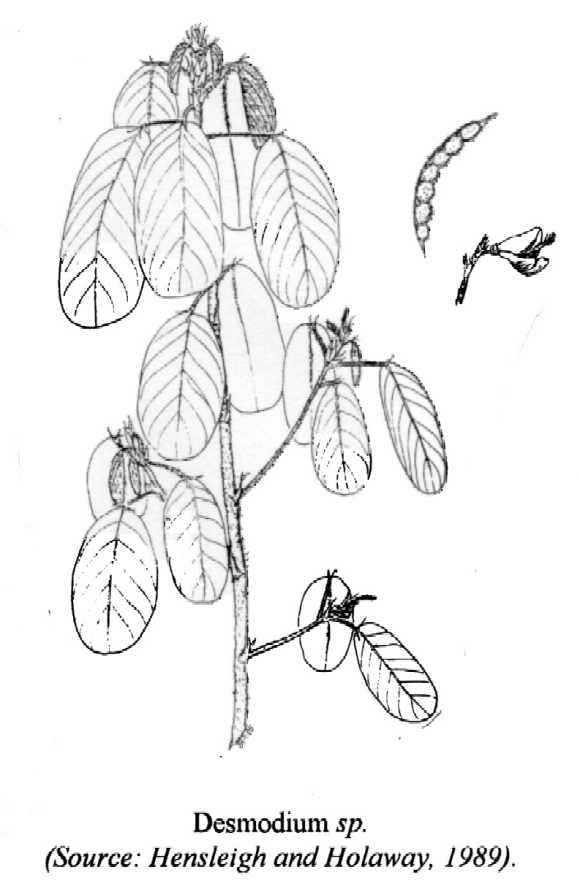 Flemingia macrophylla
Flemingia macrophylla
The seed of flemingia is also hard and small, with 45,000-97,000 per kilogram (Budelman 1989). To improve germination, the shiny black seeds are treated before sowing. Soak seeds in boiled water for 2-3 minutes, gently stirring the seed for the duration. Pour off the hot water, replace with cool water and soak for 12 hours. Merely soaking seeds in cool water for 12 hours will also improve germination (Roshetko 1995). Germination occurs in 7-14 days. Flemingia seedlings grow slow and are sensitive to competition. Weed control should be maintained for 3-6 months (Budelman 1989, Roshetko et al. 1993). As with rensonii, flemingia is usually established by direct sowing. Spacing and management for hedgerow systems or seed orchards are similar for the two species. With flemingia a larger volume of seed is needed to establish an equal length of hedgerow. A pinch of seed between the thumb and two fingers is needed to establish one meter of hedgerow with an inrow spacing of 2.5 cm.
Flemingia produces flowers and seed within 6-7 months. As with rensonii, seed yields are limited in the first year, but increase with age and size of the trees. The nutritious pods attract insect attack. It may be necessary to treat plants with insecticides (MBRLC undated). The small pods generally contain two seeds (Budelman 1989). At maturity, the pods turn brown and split, discharging their seeds. It is important to harvest pods before the discharge of seeds. As with rensonii, pods should be harvested by hand-stripping cutting branches will decrease subsequent seed crops. Branches are small, soft and damage easily. During harvesting operations, care must be maintained to avoid damaging the plants. Flemingia can produce two seed crops per year.
Harvested pods are sun dried for 2 days. Once dry, put pods in a sack and gently pound with a stick. This process will detach the seeds from the pods. Sun dry contents for two more days and winnow to separate seeds from debris. Seed storage methods are the same as with rensonii. A ten-meter double hedgerow can produce 1 kilogram of seed per year.
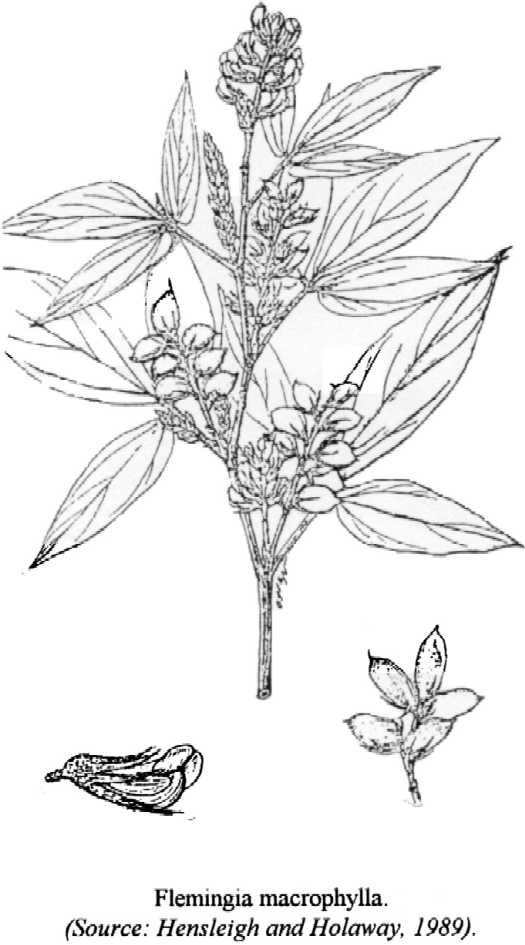 General Guidelines for Seed Production
General Guidelines for Seed Production
Local seed production programs for any species should observe some guidelines to assure the maintenance of high-quality genetic stock. First and foremost, the seed used to establish a seed production area must be of the highest genetic quality. The ed should be from an area with similar environmental characteristics to the establishment site. To ensure genetic diversity, the seed should have been collected from at least 25 healthy ‘mother trees’ with a minimum distance of 100 meters between each tree. Mother trees, should display the same characteristics for which trees are being raised; i.e., straight boles or limbs, tall height, maximum biomass production, etc. Seed should not have been collected from isolated trees because they may have been self-pollinated or pollinated by only a few individuals. Seed obtained from harvesting operations that have complied with these precautions will produce trees with a broad and healthy genetic base.
When collecting seed from human made seed production areas continue to follow the guidelines mentioned above. It is worth stressing the importance of collecting seed from a minimum of 25 healthy mother trees displaying the desired characteristics. Because seed production areas are of small size, it may not be possible for all mother trees to be 100 meters apart. In such cases, select mother trees that are equally spaced throughout the seed production area. With hedgerows, collect seed from across its length. Additionally, collect seed from all parts of a tree’s crown -top, bottom and sides – each part may have been pollinated by different individuals. This precaution will help maintain a broad genetic base (Anonymous 1992). Be cautious of collecting seed from human made stands of trees where origin of the mother trees is not known. Such stands may have been planted from seeds of only a few individuals and will have a narrow genetic base. Trees reproduced from a narrow genetic base often display depressed growth and survival – a situation not beneficial to the planter. Avoid this situation by maintaining a broad genetic base.
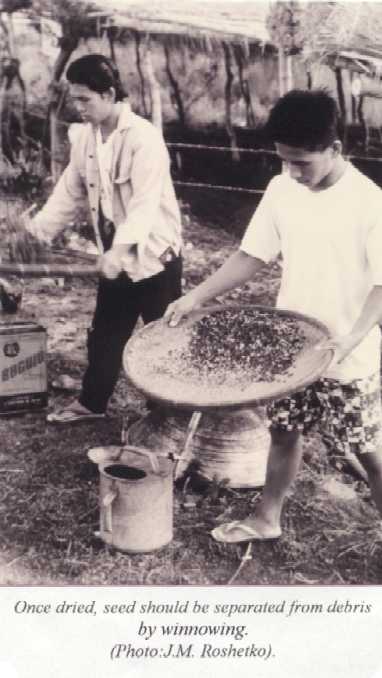 Acknowledgment:
Acknowledgment:
Much of the information reported in this fact sheet was collected during interviews with MBRLC staff members, including: Jeff Palmer, Carlos Juano, Generoso Laquihon Jr., and Calvin Fox.
For more information on community-based seed production of multipurpose trees and “Sloping Agricultural Land Technology (SALT)” contact:
Mindanao Baptist Rural Life Center
PO Box 80322
8000 Davao City
PHILIPPINES
Phone: 63 82 221-1185
Note: The mention of brand names does not consitute an endorsement by the author, publisher, or funder.
Further Reading:
Anonymous. 1992. Seed collection. Technical Bulletin: Forests and Forestry, No. 1. Washington DC, 20433, USA: World Bank, Asia Technical Department, 6 pp.
Budelman, A. 1989. Flemingia macrophylla: A valuable species in soil conservation. NFT Highlight 89-04. Morrilton, AR, USA: Nitrogen Fixing Tree Association, 2 pp.
Hensleigh, T.E. and B.K. Holaway. 1988. Agroforestry species for the Philippines. Washington DC, USA: US Peace Corps, 404.
Laquihon W.A. and M.V. Pagbilao. 1994. Sloping Agricultural Land Technology (SALT) in the Philippines. In R.C. Gutteridge and H.M. Shelton, eds. Forage tree legumes in tropical agriculture. CAB International, Wallingford, Oxon, United Kingdom. 366-373.
MBRLC. Undated. How to grow Desmodium rensonii. Bansalan, Davao del Sur, Philippines: Mindanao Baptist Rural Life Center, 2 pp.
Roshetko, J.M., D.O. Lantagne, and M.A. Gold. 1993. Evaluation of direct-seeded tree species in a Jamaican pasture. Nitrogen Fixing Tree Research Reports 11: 22-25.
Roshetko, J.M. 1995. Seed treatment and inoculation. Agroforestry for the Pacific Technologies, Factsheet 12. Morrilton, AR, USA: Nitrogen Fixing Tree Association, 4 pp.
Willan, R.L., C.E. Hughes, E.B. Lauridsen. 1990. Seed collection for tree improvement. In N. Glover and N. Adams. Tree improvement of multipurpose species. Morrilton, AR, USA: Forestry/Fuelwood Research and Development Project, 11-3 8.
Written by James M. Roshetko, Program Associate, Winrock International Institute for Agricultural Development
A publication of the Forest, Farm, and Community Tree Network (FACT Net)
Winrock International
Email: forestry@msmail.winrock.org
